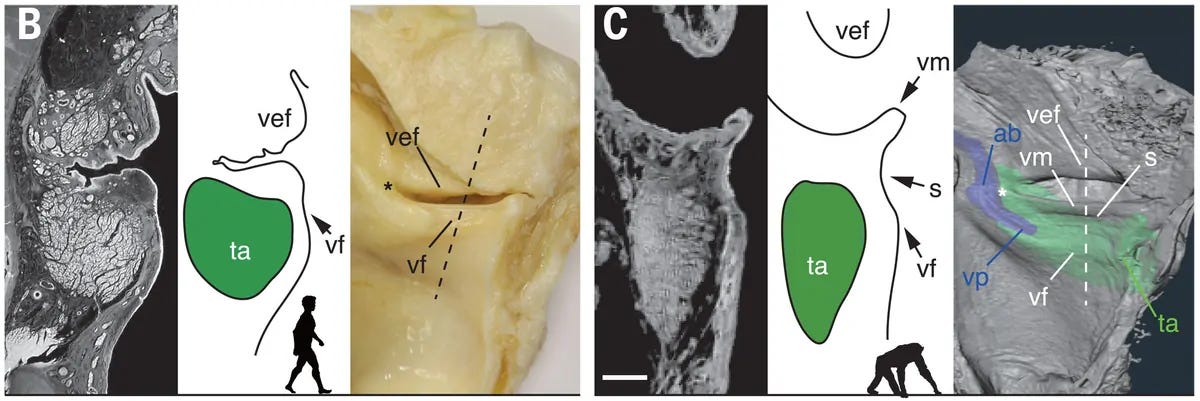A Less Complex Larynx Lead Way To Human Speech
Oral communication may have been aided by the evolutionary loss of a thin vocal membrane in the larynx
Compared to other primates, humans have some distinctive physical characteristics. In particular are our vocal tracts as well as the brain power which have allowed our ability to talk. A new study in Science 1was published online yesterday which suggests a rather counterintuitively notion — the evolution of sophisticated speech may have taken place throughout the course of a human larynx's structural simplicity.
The authors write that the absence of a laryngeal membrane may have helped stabilize vocalization in early humans, enabling considerable information transmission through spoken language, based on comparisons among modern primates, tests, and mathematical modeling.

This is a hard suggestion to make, because unline bipedalism, and brain size, languagte isn’t in the fossil record. So, their method for examining the evolution of language is to compare the anatomy of the larynx of nonhuman primates to that of humans.
Keep reading with a 7-day free trial
Subscribe to Anthropology.net to keep reading this post and get 7 days of free access to the full post archives.
